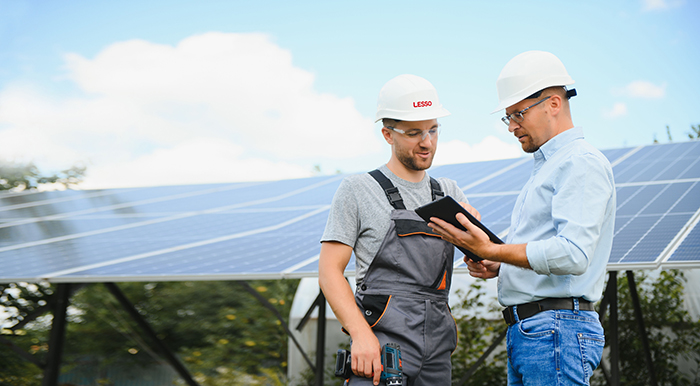With the spread of the green energy idea, rooftop photovoltaic power generation systems have steadily become the preferred choice of households and businesses. However, are there any hidden risks lurking beneath this prosperity? This article will look at the potential risks of rooftop photovoltaic power generation in order to assist the public understand this technology better.
1. Structural hazards include roof load bearing and installation issues.
When installing a PV system, you must consider the roof's structural strength and load-bearing capabilities. The weight of PV panels and their mounts may exert strain on old or structurally weak roofs, and long-term stress may cause fatigue and structural damage. In addition, incorrect installation activities may harm the roof's waterproof layer, resulting in difficulties such as water leaks.
2. Electrical Safety Hazards: Fire and Electric Shock Risk.
Photovoltaic power generation systems use high voltage direct current, and if the system is not correctly installed or maintained, there is a risk of electrical fire. Lightning, especially during thunderstorms, can cause a system short circuit or even a fire. At the same time, if the PV system's insulation fails, personnel contact could result in an electric shock mishap.
3. The underlying threat to operating efficiency: shadow shading and maintenance issues.
Direct sunlight has a significant impact on the efficiency with which PV panels generate electricity. If PV panels are shadowed by trees, buildings, or other objects, their power generating efficiency suffers significantly. Furthermore, long-term exposure to PV panels causes dust and debris to build, which, if not cleaned on time, leads to a decrease in power generation efficiency.
4. Economic Risks: Investment Returns and Subsidy Policy Changes.
Although PV power generating provides long-term economic benefits, the initial investment is very significant. If the investor does not thoroughly evaluate the local lighting circumstances, tariff subsidy policies, and system maintenance costs, the return on investment may be lower than planned. Changes in subsidy policy may also have an impact on investment returns.
5. Environmental Impact: Disposal Issues with Waste PV Panels.
PV panels have a limited service life of approximately 20-25 years. If discarded PV panels are not properly managed, they might pollute the environment. At the moment, the recycling and reuse system for PV panels is not yet flawless, which is a significant issue to address in the future.
6. Grid Integration Difficulties and Power Stability Issues
It is difficult to incorporate PV power into the grid. Grid operators may impose stringent technical and safety requirements for grid-connected PV installations. Simultaneously, the intermittent nature of PV power generation may provide a challenge to grid stability, particularly in places with significant PV adoption.

In conclusion, while rooftop PV offers the benefit of being clean and renewable, it also has a number of potential drawbacks and issues. Investors and consumers should carefully evaluate these concerns before installing a PV power generation system, and they should seek professional advice and services to guarantee that the system operates safely and efficiently.







